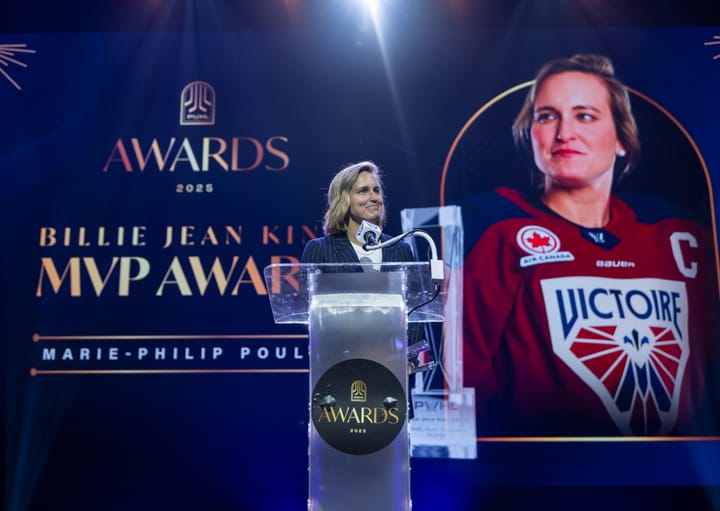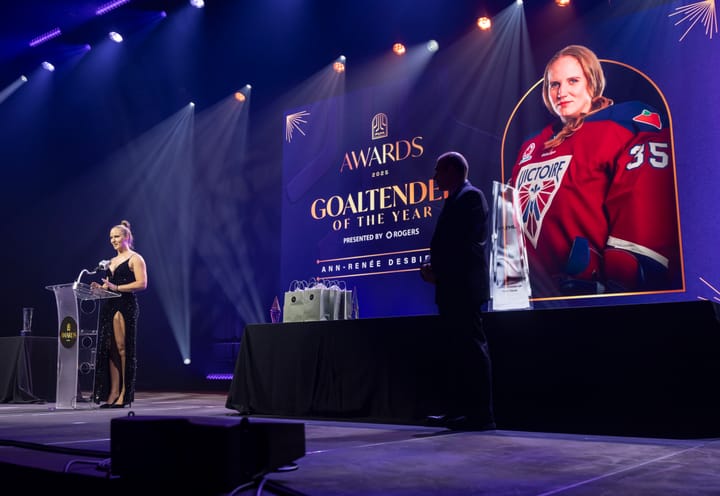Book Review: “Too Many Men on the Ice”
A logical successor to <em>On the Edge</em>
As some of our readers may know, I’ve been spending a lot of time researching historical women’s hockey stats. In my countless hours maneuvering around dead links and trying to fill in the blanks in spreadsheets, two book titles kept popping up. The first, of course, was On the Edge: Women Making Hockey History by Elizabeth Etue and Megan K. Williams, which we reviewed earlier in September. The second was Too Many Men on the Ice: Women’s Hockey in North America (1997) by Joanna Avery and Julie Stevens.
Like On the Edge, Too Many Men on the Ice was published just before the 1998 Nagano Olympics. Although the books cover much of the same ground, Too Many Men proved to be less dense and offered a broader, less Canadian-centric perspective of the game. It also frequently referenced the strong work of Etue and Williams. Avery and Stevens’ book dedicated far less ink to examining the minutiae of the women’s game north of the border. Instead, it provides unique insight into the early hotbeds of women’s hockey in the U.S. as well as in Europe.
Related
Book Review: “On the Edge: Women Making Hockey History”
If you want to know how women’s and girls’ hockey took root in Minnesota and Massachusetts, this book is a great place to start. It also explores the emergence of NCAA women’s hockey and the impact of Title IX on women’s sport in the U.S. For that reason alone, Too Many Men on the Ice is a great place to start digging for those who are curious about the history of women’s hockey in the States and the state of the game in 1997 as described by key figures like Kelly Dyer, Cammi Granato, Karyn Bye, and others.
The book focuses on women’s hockey in North America, which is why it delves more into the history of the game in the States than On the Edge. Thankfully, it also offers a fascinating summary of the origins of the game in Canada, which is among the most insightful and fascinating parts of the book. Every women’s hockey fan and student of hockey history will learn something from Too Many Men. Avery and Stevens should be tapped as screenwriters for a documentary that dives into the history of the game. The depth and quality of their research brings a lot to the table.
An excerpt from Too Many Men on the Ice:
“Another important part of the women’s uniform at the turn of the century was the long woolen skirt. Although the skirts were cumbersome, it was unheard of that women would wear pants. As most games were still held on outdoor rinks, the skirts provided warmth against the bitter temperatures and biting winds. Goaltenders soon found the skirts had another advantage — stopping the puck. Some women goalies even sewed buckshot pellets into the hem of their skirts, providing additional weight to keep the skirts at ice level.”
Avery and Stevens provide figures and information that have proven to be difficult to track down online throughout Too Many Men. It offers roster breakdowns for Team Canada and Team USA for every major international tournament, leading up to Nagano. There are also two entertaining feature chapters on Kelly Dyer and Angela James that both make you yearn for full biographies. Really, it has a little bit of everything. There are even times when the variety of topics covered by the book results in less than graceful transitions between sections and chapters, but it is never distracting.
Too Many Men on the Ice is packed with anecdotes and nuggets of history that are difficult, if not impossible, to find elsewhere. For that reason alone, it should be on your bookshelf. It reads like a natural sequel or successor to On the Ice. Truth be told, one could stitch together the two books and come away with a book that every hockey fan needs to have. If you twisted my arm, I’d recommend reading Too Many Men on the Ice before On the Edge because it offers a more balanced look of the game even if it doesn’t dive nearly as deep as its precursor in some sections.





Comments ()